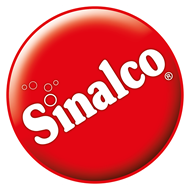Modern Trade in the Philippines - Potential Market for Small and Medium Size Enterprises (SMSEs)
Decades ago there was no Modern Trade channel in the Philippines to speak off. The biggest retail channel for consumer goods was the Traditional Trade, composed of "mom and pop type" of stores (sari-sari stores), wet market stalls and grocery stores. Modern Trade stores such as supermarket, hypermarket and convenience stores were relatively few.
In the nineties, supermarkets like SM, Robinsons and Puregold slowly opened new branches. Other modern trade retail stores like the convenience stores followed suit.
In year 2000, when the Retail Trade Liberalization Act was passed as a law, there was a sudden explosion of new branches, not only in Metro Manila but also in key cities and provinces nationwide. Today's retail giants SM, Robinsons and Puregold opened new stores in several formats in key cities and provinces in the Philippines. The big Philippine modern grocery chains deliberately expanded as head start over the entry of global retailers - Walmart, Carrefour, Cosco and others. These global retailers were capable of aggressive market consolidation.
The channel value and volume turnover slowly changed hands from year 2000 onwards. Growth shifted towards Modern Trade. This shift has changed consumer buying behavior. Consumers are becoming more shopper savvy and prefer to shop in supermarket, hypermarkets and convenience stores. Modern Trade retailers were trying to outdo each other in providing consumers exciting shopping experience.
Presently, Modern Trade has become a huge market for manufacturers, importers, and other suppliers and is said to be one of the biggest industry employer in the Philippines. This is a big market for Small and Medium Size Enterprises (SMSEs), that could provide a formal market if their product portfolio would fit into this market.
However, this is a challenging market that would require things such as: knowledge on how to sell to supermarkets; how to be profitable; how to minimize cost and losses. There are other challenges to be faced such as slow product movement, sales returns, accounts receivables management, high cost of delivery, warehousing, supply volumes, product quality and host of other problems.
This market offer huge opportunities for SMSEs, but on the other hand might be nightmarish if entry is not handled well. SMSEs that are new to this channel should best secure the services of a reliable consultant in this channel, to help walk them through this market and navigate them away from "landmines" in order to establish a sustainable business.
This slideshow provides more information on how to sell to Modern Trade:
The author worked as sales professional selling to modern trade for ten years and is currently the knowledge base writer of MBF Sales Training & Consultancy.
In the nineties, supermarkets like SM, Robinsons and Puregold slowly opened new branches. Other modern trade retail stores like the convenience stores followed suit.
In year 2000, when the Retail Trade Liberalization Act was passed as a law, there was a sudden explosion of new branches, not only in Metro Manila but also in key cities and provinces nationwide. Today's retail giants SM, Robinsons and Puregold opened new stores in several formats in key cities and provinces in the Philippines. The big Philippine modern grocery chains deliberately expanded as head start over the entry of global retailers - Walmart, Carrefour, Cosco and others. These global retailers were capable of aggressive market consolidation.
The channel value and volume turnover slowly changed hands from year 2000 onwards. Growth shifted towards Modern Trade. This shift has changed consumer buying behavior. Consumers are becoming more shopper savvy and prefer to shop in supermarket, hypermarkets and convenience stores. Modern Trade retailers were trying to outdo each other in providing consumers exciting shopping experience.
Presently, Modern Trade has become a huge market for manufacturers, importers, and other suppliers and is said to be one of the biggest industry employer in the Philippines. This is a big market for Small and Medium Size Enterprises (SMSEs), that could provide a formal market if their product portfolio would fit into this market.
However, this is a challenging market that would require things such as: knowledge on how to sell to supermarkets; how to be profitable; how to minimize cost and losses. There are other challenges to be faced such as slow product movement, sales returns, accounts receivables management, high cost of delivery, warehousing, supply volumes, product quality and host of other problems.
This market offer huge opportunities for SMSEs, but on the other hand might be nightmarish if entry is not handled well. SMSEs that are new to this channel should best secure the services of a reliable consultant in this channel, to help walk them through this market and navigate them away from "landmines" in order to establish a sustainable business.
This slideshow provides more information on how to sell to Modern Trade:
The author worked as sales professional selling to modern trade for ten years and is currently the knowledge base writer of MBF Sales Training & Consultancy.



Comments
Post a Comment